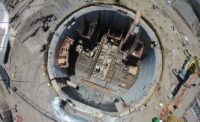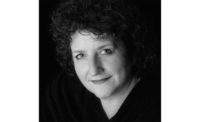Southland Digs Market Prospects

Southland Holdings LLC didn’t begin until 2006 to join five construction firms that now make up its tunneling and heavy construction operations, but their expertise dates to 1930.
PHOTO BY RACHEL SACKETT/SOUTHLAND HOLDINGS
Southland Holdings LLC didn’t begin until 2006 to join five construction firms that now make up its tunneling and heavy construction operations, but their expertise dates to 1930.
The Texas contractor now eyes the future with a focus on the environmental market, winning an array of recent large U.S. water, wastewater and flood control projects that generated close to half its revenue last year and attracted 2,000 employees.
Southland—which debuts at No. 36 on the Top 200 Environmental Firms list, reporting $329.8 million in sector revenue and a 37% backlog gain in 2017—sees the market “as one of the fastest growing in the industry,” says CEO Frank Renda. “By being national experts … we will continue to expand.”
The firm last year completed one $71.4-million phase of the Deep Rock tunnel combined sewer overflow project in Indianapolis that will initially capture 54 million gallons of sewage from the city's largest overflow points and transport it to a below ground connector pump station for further movement to a wastewater treatment plant for treatment.
Southland says the project team broke world tunnelling records in the amount of feet mined in one day, week and month
Recently, Southland finished the $375-million Kaneohe/Kailua gravity sewer tunnel and pump-station project in Honolulu to increase storage in Oahu’s wastewater treatment system. The project involved the first tunnel-boring machine ever used in Hawaii.
Challenging conditions, such as endangered cave-dwelling invertebrates and hard fractured rock, also have confronted Southland on water-supply tunnel projects in Austin, Las Vegas, Indianapolis and New York, including the $143-million upstate Schoharie Reservoir tunnel (above), critical to New York City’s water supply.
The next frontier in environmental projects is longer lines to relieve water scarcity up to 100 miles away from a source, Renda says. A supply line from Atoka, Okla., to Dallas is in design, but faces challenges crossing the state border. Other long and large-diameter lines are planned in Utah, Nevada, Georgia and Wyoming.
“We think we can build a few of them,” says Renda.
Increased need for water and wastewater facilities for a changing population will tax the labor force, he says. In Alabama and Texas, workforce training at the high school level is part of Southland’s outreach on local projects.
Related Article: Top 200 Environmental Firms Reach Out to Tap Markets




